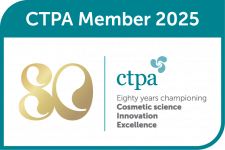Understanding the Product Information File (PIF) in Cosmetic Regulations
 In the realm of cosmetic product regulation, the Product Information File (PIF) stands as a cornerstone of compliance and safety. Mandated by EU Regulation 1223/2009 (and also applicable in the UK), the PIF serves as a comprehensive dossier that ensures cosmetic products meet stringent safety standards before reaching consumers. This blog post delves into the purpose, content, format, and management of PIFs, while also exploring potential simplifications for small businesses.
In the realm of cosmetic product regulation, the Product Information File (PIF) stands as a cornerstone of compliance and safety. Mandated by EU Regulation 1223/2009 (and also applicable in the UK), the PIF serves as a comprehensive dossier that ensures cosmetic products meet stringent safety standards before reaching consumers. This blog post delves into the purpose, content, format, and management of PIFs, while also exploring potential simplifications for small businesses.
The Purpose of a PIF
The primary purpose of a Product Information File is to demonstrate that a cosmetic product is safe for human health when used under normal or reasonably foreseeable conditions. It serves as a central repository of all relevant information about a cosmetic product, enabling authorities to verify compliance with regulatory requirements efficiently. The PIF plays a crucial role in:
- Ensuring product safety: By compiling comprehensive data on ingredients, formulation, and safety assessments.
- Facilitating market surveillance: Providing authorities with quick access to product information for compliance checks.
- Providing transparency in the supply chain: Ensuring all parties involved in production and distribution have access to necessary product information.
- Supporting rapid response to safety concerns: Enabling quick access to crucial information in case of adverse events.
Required Content of a PIF
EU Regulation 1223/2009 outlines specific requirements for the content of a PIF. Let’s explore each component in detail:
1. Product Description
This section should provide a clear and comprehensive description of the cosmetic product, including:
– Product name and category
– Complete qualitative and quantitative composition (can be referred to CPSR)
– Physical and chemical characteristics of the product (can be referred to CPSR) and raw materials
– Stability data under reasonably foreseeable storage conditions
– Specifications of raw materials and finished product
– Packaging information (including material specifications)
– Details on the product’s intended use and target consumer group (can be referred to CPSR)
2. Cosmetic Product Safety Report (CPSR)
The CPSR is a critical component of the PIF, consisting of two parts:
Part A: Cosmetic product safety information
Part B: Cosmetic product safety assessment
This report evaluates the safety of the product based on its ingredients, their toxicological profiles, and the product’s intended use.
3. Manufacturing Method
This section should detail:
– Manufacturing process, including batch preparation, filling, and packaging
– Description of the manufacturing facilities
– Statement of compliance with Good Manufacturing Practice (GMP)
– Quality control measures
– Details of any subcontractors involved in the manufacturing process
4. Proof of Claimed Effects
For any claims made about the product, evidence must be provided:
– Scientific studies supporting efficacy claims
– Consumer perception studies or user trials
– In vitro or in vivo tests demonstrating claimed effects
– Literature reviews supporting product claims
– Details of testing methods and statistical analysis of results
5. Animal Testing Data
This section must include:
– A declaration that the finished product has not been tested on animals
– Information on any animal testing conducted on ingredients (can be referred to CPSR), including:
– Date and purpose of testing
– Alternative methods considered
– Justification for animal testing if conducted after the EU ban
Suggested Format for a PIF
While the EU regulation doesn’t prescribe a specific format for the PIF, a well-organized structure enhances its usability. Here’s an expanded suggested format:
- Table of Contents
- Product Information
– Product identification (name, category, intended use)
– Complete formulation details (qualitative and quantitative composition)
– Physical and chemical characteristics
– Stability data
– Microbiological quality specifications
– Manufacturing information
– Description of manufacturing method
– Statement of GMP compliance
– Details of manufacturing facilities and any subcontractors
- Safety Assessment
– Cosmetic Product Safety Report (Part A and B)
– Ingredient Safety data sheets
- Efficacy and Claims
– List of product claims
– Proof of claimed effects
– Clinical studies
– Consumer trials
– In vitro and in vivo test results
– Literature reviews
- Compliance Documentation
– GMP certification
– Animal testing declarations
– Certificates of analysis for raw materials
– Supplier declarations (e.g., non-use of prohibited substances)
- Labelling and Packaging
– Artwork and packaging specifications
– Copies of product labels
– Primary and secondary packaging information
– Stability testing in packaging
- Post-Market Surveillance
– Description of the system for collecting and reviewing product experience data
– Adverse event reporting system
– Corrective action procedures
– Records of any reported undesirable effects
- Additional Information
– Any additional data relevant to product safety or regulatory compliance
Responsibility for PIF Maintenance
The responsibility for creating and maintaining the PIF lies with the “Responsible Person” as defined in the EU Cosmetic Regulation. This is typically:
– The manufacturer or importer of the cosmetic product within the EU
– A designated person or entity within the EU, appointed by a non-EU manufacturer
The Responsible Person must:
– Ensure the PIF is up-to-date and readily accessible to authorities
– Keep the PIF for a period of ten years following the date on which the last batch of the product was placed on the market
– Provide the relevant parts of the PIF to competent authorities upon request
– Regularly review and update the PIF as needed (e.g., when formulations change or new safety data becomes available)
– Ensure the safety assessment is carried out by a qualified professional
– Notify serious undesirable effects to competent authorities
Challenges in Compiling a PIF
Companies often face several challenges when putting together a PIF:
- Gathering comprehensive safety data for all ingredients
– Obtaining detailed information from suppliers
– Dealing with proprietary ingredient blends
– Assessing the safety of novel ingredients
- Conducting and documenting thorough safety assessments
– Finding qualified safety assessors
– Interpreting complex toxicological data
– Justifying the safety of ingredients with limited data
- Keeping the PIF up-to-date
– Tracking and incorporating formulation changes
– Updating safety assessments when new scientific data becomes available
– Managing version control of PIF documents
- Ensuring consistency across multiple products and markets
– Maintaining uniform documentation standards
– Adapting to different regulatory requirements in various markets
- Managing the volume of documentation required
– Organizing and storing large amounts of data
– Ensuring quick access to specific information when needed
– Balancing comprehensiveness with practicality
- Navigating language requirements
– Translating technical documents for different EU member states
– Ensuring accuracy in translations of scientific and regulatory information
Simplification for Small Businesses
While the PIF requirements apply to all cosmetic products regardless of company size, there are ways small businesses can simplify the process:
- Focus on essential information:
– Prioritize core safety and compliance data
– Use summary formats where possible, while ensuring all required information is included
- Use standardized templates:
– Develop or acquire templates for consistent documentation
– Create checklists to ensure all required elements are included
- Seek expert assistance:
– Consider consulting with regulatory experts for complex assessments
- Utilize digital tools:
– Implement software solutions designed for PIF management
– Use document management systems to organize and update information efficiently
- Collaborate with suppliers:
– Work closely with good raw material suppliers to obtain necessary safety data
- Streamline product range:
– Limit the number of ingredients used across products
– Use well-established ingredients with robust safety profiles
- Plan for compliance from the start:
– Incorporate PIF requirements into the product development process
– Collect necessary data during formulation stages
- Regular review and update:
– Establish a systematic approach to reviewing and updating PIFs
– Set reminders for periodic checks of regulatory changes and new scientific data
In conclusion, the Product Information File is a vital component of EU cosmetic regulations, ensuring product safety and compliance. While compiling a comprehensive PIF can be challenging, especially for small businesses, it’s an essential step in bringing safe and compliant cosmetic products to the European market. By understanding the requirements and implementing efficient processes, companies can navigate the regulatory landscape more effectively, ultimately benefiting both businesses and consumers. The PIF serves not only as a regulatory document but also as a valuable tool for product stewardship and quality assurance in the cosmetics industry.
Safety Assessor Qualifications
MSc (Distinction), University of Strathclyde
BSc (Hons) Chemistry, University of Nottingham
Certificate - Safety Assessment of Cosmetics in the EU, Vrije University Brussels
Get in Touch
If you would like to discuss any of your products or ranges, please fill out our contact form




